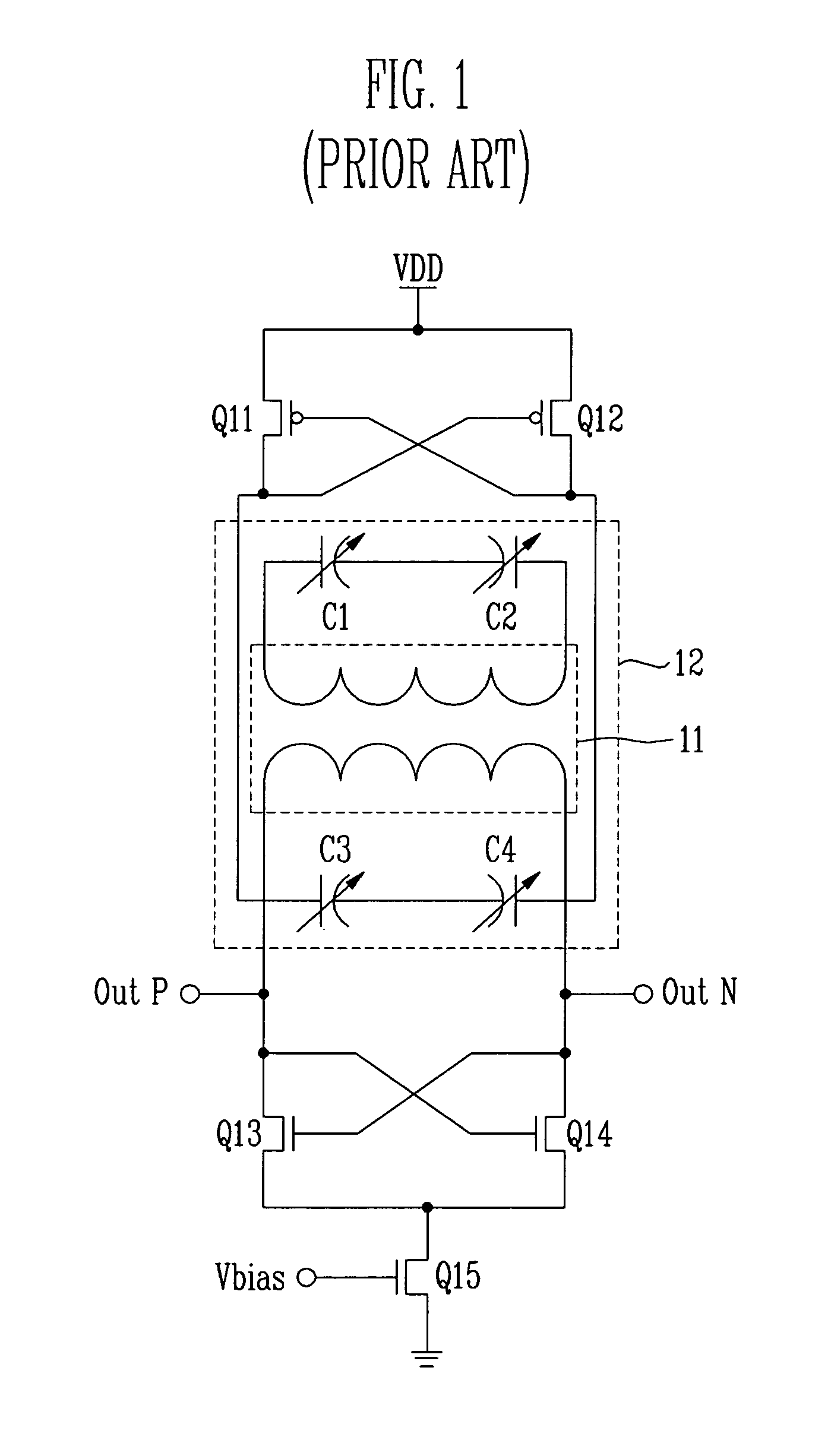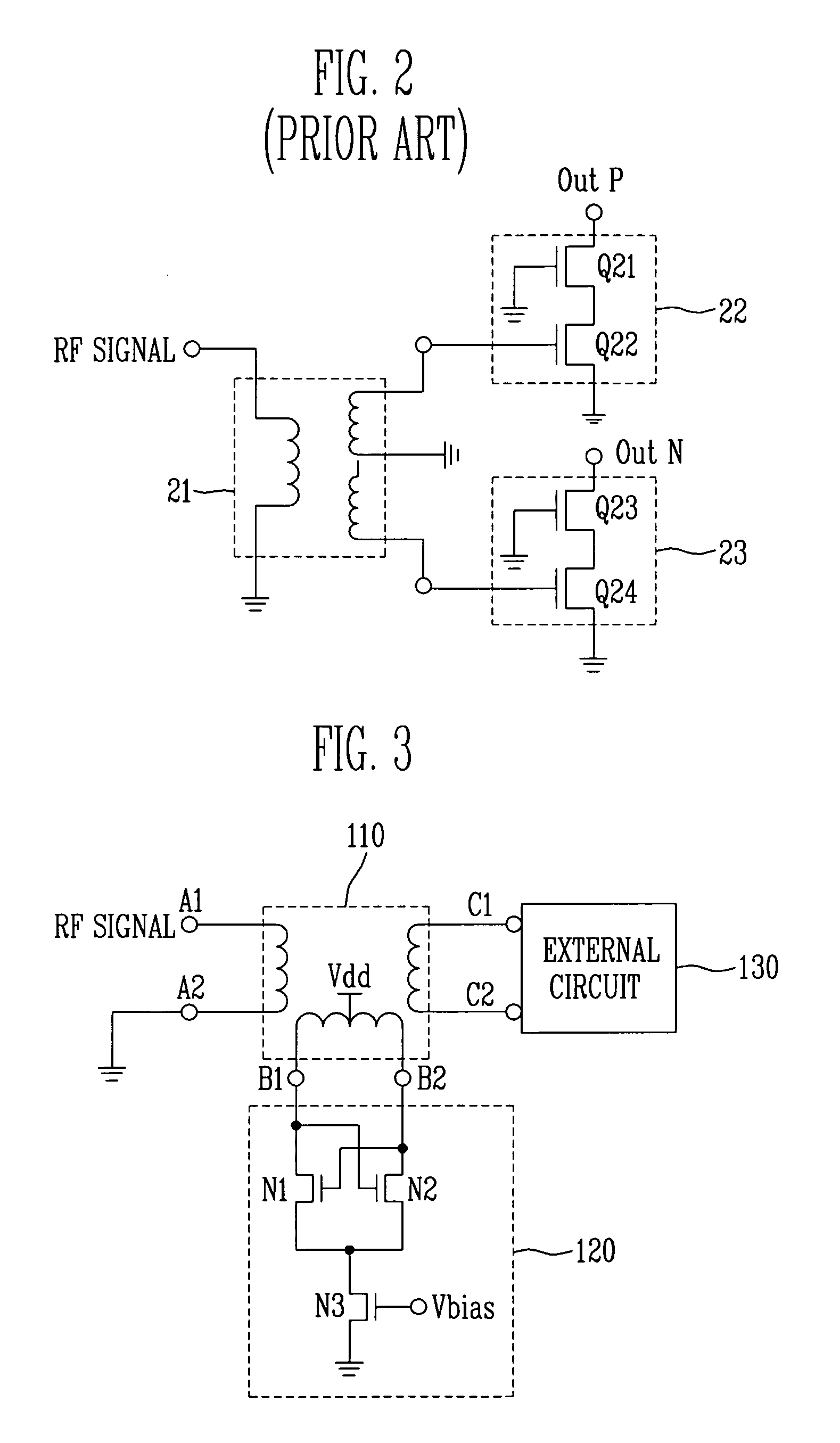Q-boosting circuit
a boosting circuit and circuit technology, applied in the direction of electric variable regulation, process and machine control, instruments, etc., can solve the problems of limited improvement range of q factor and significant deterioration of q factor of inductor, so as to reduce a resistance component of the transformer and improve q factor
- Summary
- Abstract
- Description
- Claims
- Application Information
AI Technical Summary
Benefits of technology
Problems solved by technology
Method used
Image
Examples
Embodiment Construction
[0029]Hereinafter, an exemplary embodiment of the present invention will be described in detail. However, the present invention is not limited to the embodiments disclosed below, but can be implemented in various types. Therefore, the present embodiment is provided for complete disclosure of the present invention and to fully inform the scope of the present invention to those ordinarily skilled in the art.
[0030]FIG. 3 is a circuit diagram illustrating a Q-boosting circuit according to an exemplary embodiment of the present invention. The Q-boosting circuit comprises a transformer 110 for providing a predetermined inductance L, and a negative resistance circuit 120 for reducing a resistance component of the transformer 10.
[0031]The transformer 10 includes at least three pairs of terminals A1 and A2, B1 and B2, and C1 and C2, and provides the predetermined inductance L according to numbers of winds of coils each coupled between the terminals A1 and A2, B1 and B2, and C1 and C2. A plan...
PUM
 Login to View More
Login to View More Abstract
Description
Claims
Application Information
 Login to View More
Login to View More - R&D
- Intellectual Property
- Life Sciences
- Materials
- Tech Scout
- Unparalleled Data Quality
- Higher Quality Content
- 60% Fewer Hallucinations
Browse by: Latest US Patents, China's latest patents, Technical Efficacy Thesaurus, Application Domain, Technology Topic, Popular Technical Reports.
© 2025 PatSnap. All rights reserved.Legal|Privacy policy|Modern Slavery Act Transparency Statement|Sitemap|About US| Contact US: help@patsnap.com



